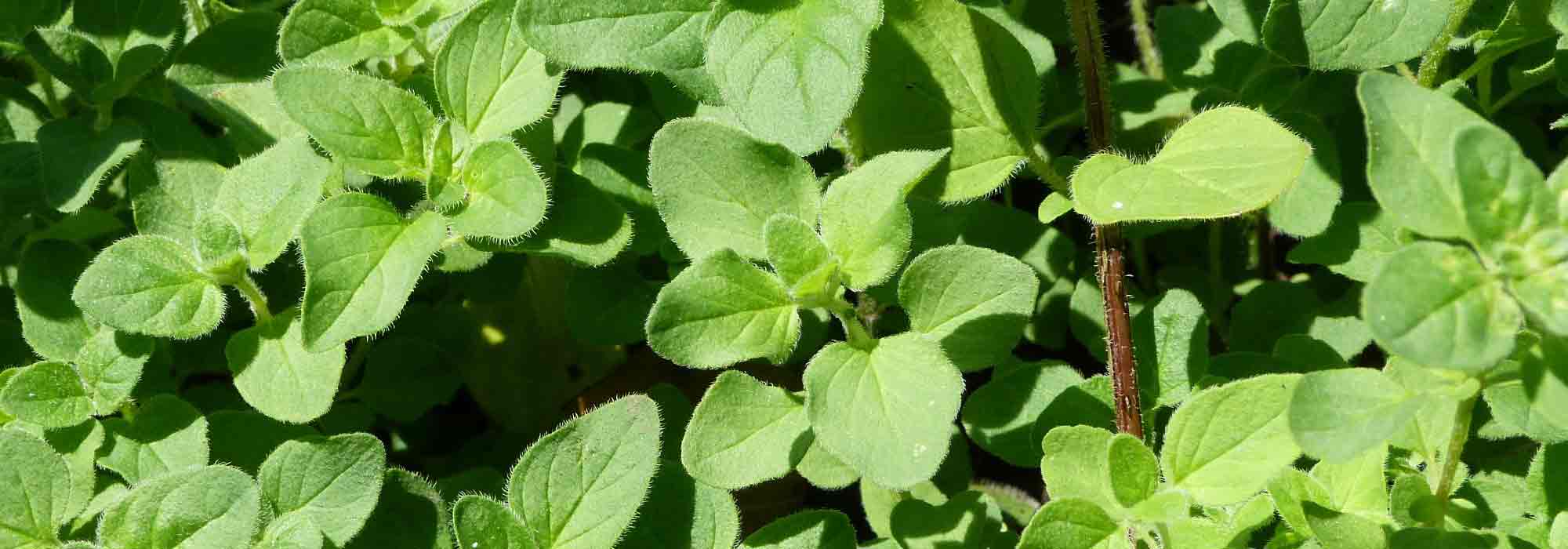
Oregano: sowing, cultivation, harvest
Contents
Oregano: sowing, growing, harvest
- Oregano is a culinary plant grown for its aromatic leaves.
- Origanum vulgare is also known as wild marjoram and is sometimes confused with garden marjoram, Origanum majorana. However, these are two distinct species.
- Hardy and perennial, wild marjoram is an easy-to-grow and resilient plant (to both drought and cold) that can be planted in the ground or in pots.
- Oregano is also a medicinal plant recognised for its antispasmodic, expectorant, and antiseptic properties.
- A classic in Portuguese and Italian cuisine, oregano leaves are used fresh or dried, often mixed with other aromatic herbs to vary the flavours in dishes.
A word from our expert
Oregano is a culinary, aromatic and medicinal plant cultivated for its fragrant leaves and its lovely melliferous flowering.
Consumed since antiquity, wild marjoram was already used for its medicinal properties as well as its aromatic scent. Oregano was believed to possess protective and enchanting powers. For this reason, it was a plant used in the making of love potions.
Today, oregano is a herb widely used in Portuguese and Italian cuisine. However, it is somewhat overlooked by the French, who often prefer common marjoram, a cousin of oregano. The leaves of wild marjoram can be used fresh or dried to flavour many dishes, and are part of the traditional herb bouquet of Provence.
At first glance, oregano is a rather modest plant, but this does not account for its stunning melliferous flowering. From July to October, oregano is a remarkable host for garden insects. Its flowers are particularly beloved by butterflies. During this same period, clusters of small white, pink, or purple flowers brighten up slopes, roadside edges, and dry land.
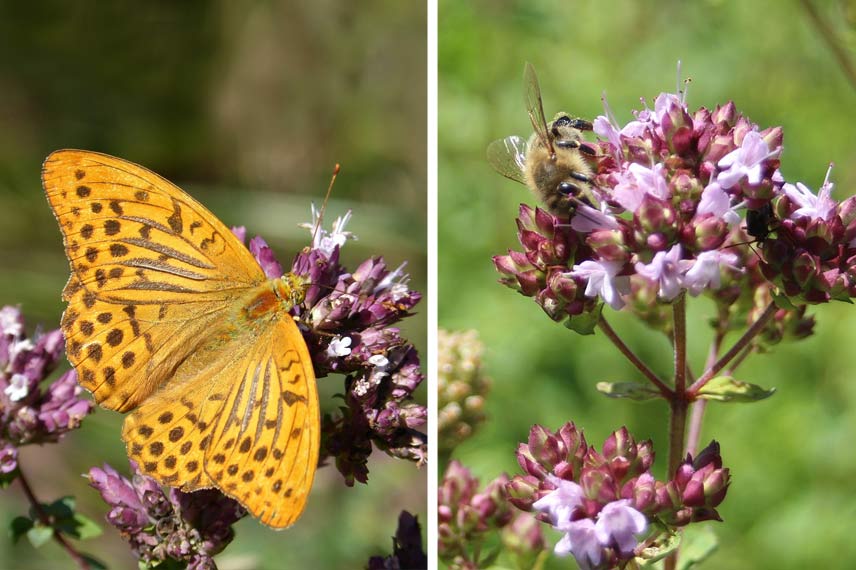
Very resilient, wild marjoram is an easy-to-cultivate plant that withstands both intense summer heat and altitude temperatures approaching -15°C. It is worth noting that the ancient Greek term for oregano means “that which thrives in the mountains.” Origanum vulgare, or common oregano, particularly enjoys sunny exposures, as well as well-drained, poor, and light soils, even stony ones. Limestone does not hinder its development. Only wet and clayey soils seem to be to oregano’s disliking.
Description and botany
Botanical data
- Latin name Origanum vulgare
- Family Lamiaceae
- Common name Mr Oregano, common oregano, wild marjoram, perennial marjoram, herb of rosary, bead plant, red tea, bastard thyme, shepherd's thyme
- Flowering July to October
- Height 30 to 70 cm
- Exposure sunny
- Soil type light, loose, fertile, cool and humus-bearing
- Hardiness -15°C
Oregano, wild marjoram, perennial marjoram, or herb of rosary, red tea and bastard thyme… Origanum vulgare is a perennial herbaceous plant native to Western and Southern Europe, belonging to the Lamiaceae family.
The genus origanum comprises 20 species, of which only common oregano, Origanum vulgare, is cultivated. Among the varieties most commonly found in our gardens, we can notably mention Origanum vulgare ‘Aureum’, the golden oregano with golden foliage, and Origanum vulgare ‘Variegatum’, with foliage edged in yellow.
Wild marjoram is a plant that can be found in its natural state in mountainous areas up to 2,000 m in altitude. This particularity explains the etymological origin of its name: oros (mountain) and ganos (brightness, cheerful aspect), literally meaning “adornment of the mountains”.
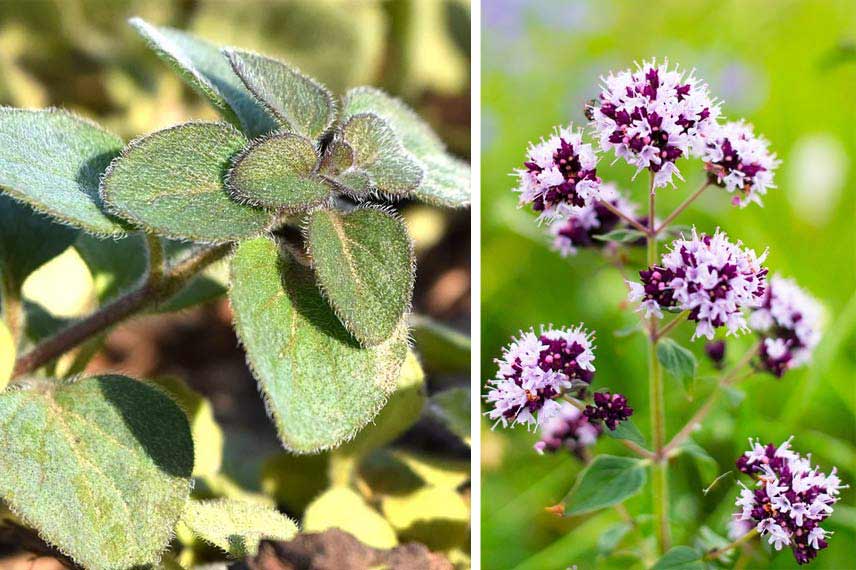
Oregano is a culinary and aromatic plant with a woody base, whose upright stems measure between 30 and 70 cm in height at ripeness. The pubescent (villous) stems have a reddish hue. The very aromatic leaves are rounded, ovate and dark green, measuring between 2 and 4 cm long.
From July to October, wild marjoram produces open panicles or corymbs, composed of small hermaphrodite flowers that are tubular and measure 2 to 4 mm long. A flowering that is highly melliferous, in shades of white to dark pink, surrounded by foliose green bracts tinged with purple.
The physical and organoleptic characteristics of oregano are very similar to those of marjoram, which explains why these two herbs are often confused.
“`
Read also
Create a spiralled herb garden.Our oregano varieties
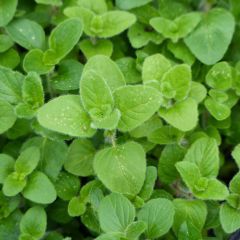
Origanum vulgare - Oregano
- Flowering time July to September
- Height at maturity 40 cm
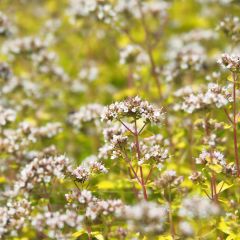
Origanum vulgare Aureum - Oregano
- Flowering time August to October
- Height at maturity 30 cm
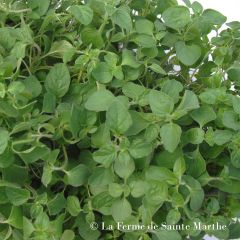
Greek Organic Oregano - Ferme de Sainte Marthe seeds
- Flowering time April to October
- Height at maturity 30 cm
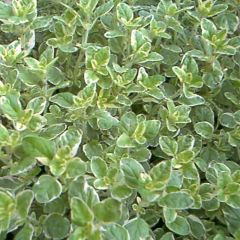
Origanum vulgare Country cream - Oregano
- Flowering time July to September
- Height at maturity 40 cm
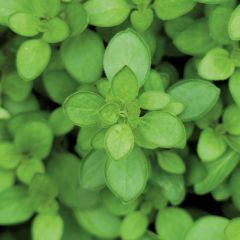
Origanum vulgare Hot and Spicy - Oregano
- Flowering time July to September
- Height at maturity 30 cm
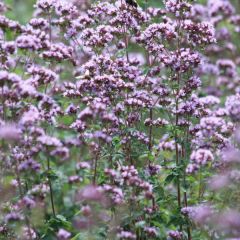
Origanum vulgare Compactum - Oregano
- Flowering time June to October
- Height at maturity 40 cm
Discover other Oregano Marjoram
View all →Available in 1 sizes
Available in 1 sizes
Available in 1 sizes
Available in 1 sizes
Available in 1 sizes
Available in 1 sizes
Available in 2 sizes
Available in 1 sizes
Available in 2 sizes
Available in 1 sizes
Planting wild marjoram
Oregano is a perennial, hardy plant (down to -15°C), resistant to both cold and drought. It can be planted in a variety of climates, preferably in light, loose, fertile, cool, and humus-bearing soil. Note that oregano is capable of thriving in all types of soil, even calcareous. However, be cautious, as although hardy, wild marjoram does not tolerate cold and humidity combined. Sensitive to excess moisture, ensure it is planted in well-drained soil.
Where to plant oregano?
Wild marjoram can be planted directly in the vegetable garden (it gets along with most vegetable plants). If your soil is rather clayey and moist, it is better to grow oregano in a pot or on a small mound. In any case, whether grown in a pot or in the ground, always prefer a sunny location, which is much more beneficial for the development of oregano.
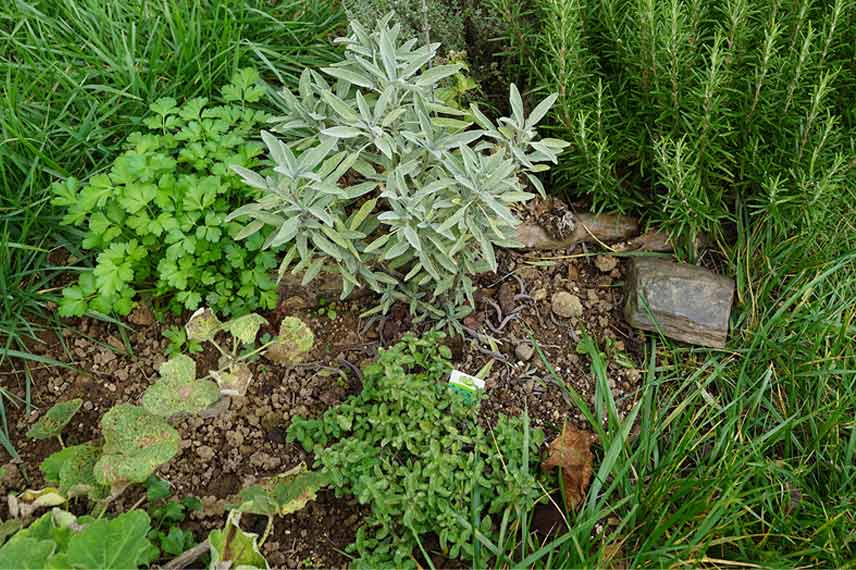
Herb garden, parsley, sage, thyme, rosemary, oregano © Onnola – Flickr
When to plant wild marjoram?
The planting of oregano takes place in spring or autumn (from September until the end of October). Depending on the varieties, wild marjoram can be planted as early as April. It will then be harvested as needed until November at the latest. Harvest usually ends between September and October, depending once again on the variety grown.
How to plant oregano?
In the ground
- Space the plants 30 cm apart in all directions.
- Add well-matured compost to the soil at the time of planting.
- Add a little sand if the soil is too heavy.
- Dig a hole three times the volume of the root ball.
- Place the root ball in the hole and cover it with fine soil.
- Firm down and water without over-saturating.
In a pot
- Place a layer of gravel at the bottom of a pot.
- Fill the rest of the container with a mix of potting soil and sand.
- Place the root ball and cover it with fine soil.
- Water regularly, without allowing water to stagnate in the saucer.
Read also
Sowing of aromatic plantsCare
Oregano is a hardy and easy-to-cultivate plant that requires little maintenance to thrive.
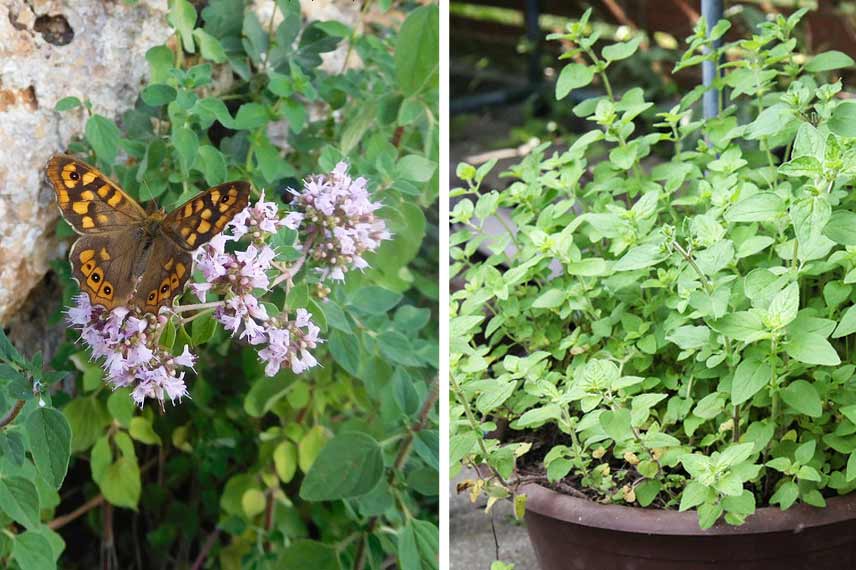
Oregano in the garden and in pots – © Maja Dumat – Flickr
Maintenance of wild marjoram in the ground
- Oregano is a very heat-resistant plant, provided that heatwaves are neither too long nor too frequent. When grown in the ground, apart from the watering that follows its planting, oregano generally does not require additional watering. The only exception is that you can water it in the evening if your garden is experiencing a significant and prolonged drought. Be careful not to water your oregano plants in winter. Indeed, the plant dislikes the combination of cold and moisture.
- Regularly hoe and weed to promote the growth of your wild marjoram plants.
- A formative pruning at the very beginning of spring is beneficial for oregano. Trim the dry stems at this time.
- Cut the clump back to the ground in autumn and mulch the base to protect the plant from frost and winter cold. Hardy down to -15°C, oregano does not require any other winter protection.
Maintenance of oregano in pots
Wild marjoram in pots needs to be watered regularly during summer. Watering should be daily in case of high summer temperatures. In winter, continue to water pots protected from rain, ensuring to let the soil dry on the surface (by 2 to 3 cm) between waterings. Never allow standing water in the saucers of your oregano pots as this risks rotting their roots.
Even though oregano is a hardy plant, do not hesitate to protect your outdoor pots with fleece during particularly cold days. However, remember to remove the fleece as soon as temperatures rise a bit.
Note: Whether in the ground or in pots, oregano is a low-maintenance plant that requires no fertilisation. Nitrogen fertiliser should be excluded, as it reduces the aromatic qualities of wild marjoram and makes it more susceptible to diseases and pests.
Harvest, storage, and use
Harvesting wild marjoram
Oregano is harvested as needed, between May and September, or from June to November depending on the cultivated varieties.
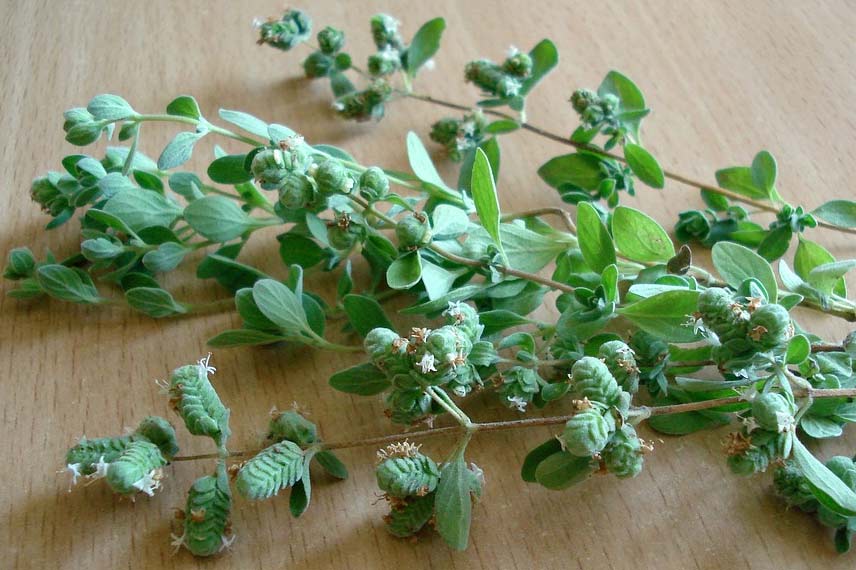
Harvest oregano stems preferably in the morning, as their aroma is more pronounced at that time. To do this, simply cut the stems cleanly before using them immediately or drying them.
Storing oregano
Although it is recommended to use them quickly after picking, fresh oregano stems can be stored for several days in the vegetable drawer of the refrigerator.
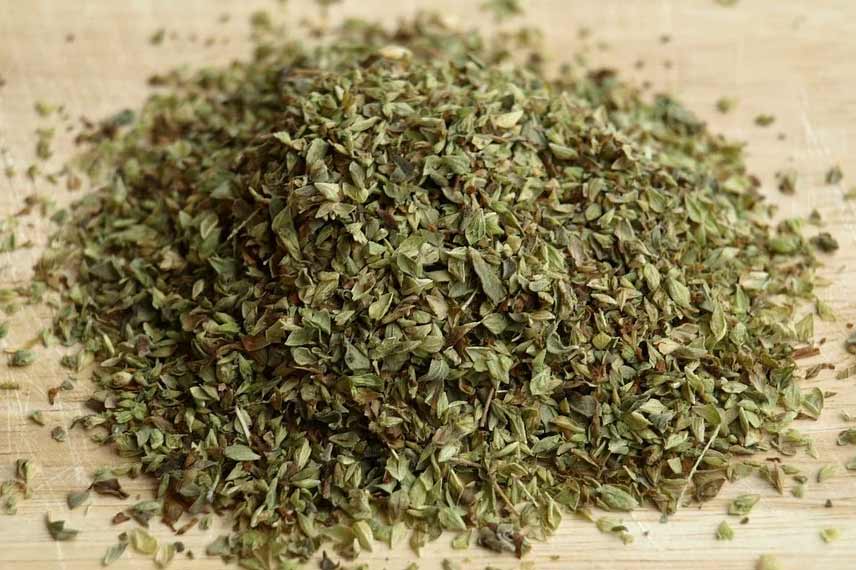
You can also freeze them or dry them. For the latter option, dry the stems upside down in a dry, airy place protected from light. Strip the stems to harvest the dried leaves that you will then store in an airtight container.
Uses of oregano
Wild marjoram is a herb cultivated for its fragrance and flavour, but also for its medicinal properties.
Oregano in cooking
Oregano is ubiquitous in Italian cuisine. Its powerful flavour can be found in pizzas, tomato sauces, grilled dishes, and flavoured oils. More broadly, wild marjoram is a highly valued aromatic and culinary plant in the Mediterranean Basin, also present in Portuguese, Greek, Cretan, Moroccan, and Provençal cuisines. Oregano is indeed part of the traditional bouquet of Herbes de Provence, alongside thyme and rosemary.
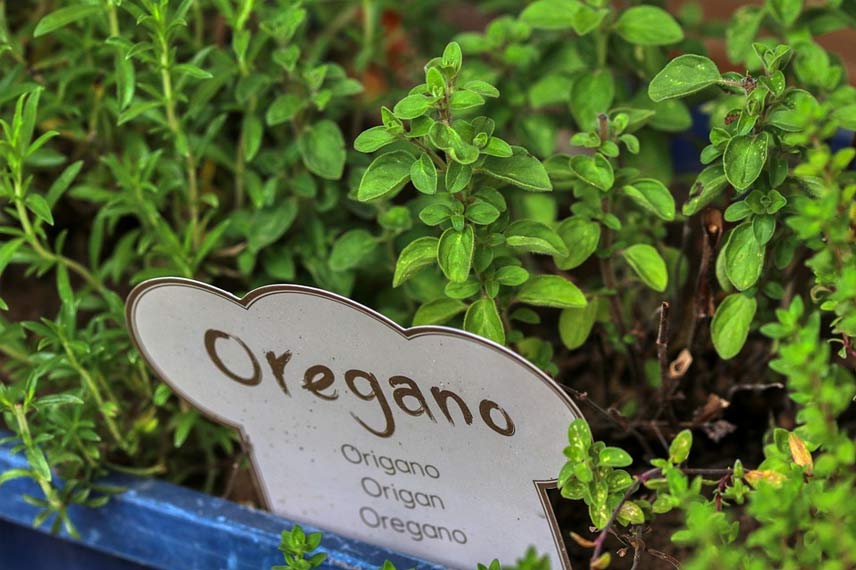
Wild marjoram can be used in a wide variety of dishes, particularly to flavour quiches, chillies, and stews.
Medicinal use of wild marjoram
The benefits of oregano are numerous. It is an excellent source of iron, calcium, manganese, and vitamins K and E. It contains vitamins with antioxidant properties, which contribute to blood clotting and bone formation.
Wild oregano is particularly rich in polyphenols, giving it antioxidant and anti-inflammatory properties that are useful for preventing cardiovascular diseases and certain cancers.
Oregano infusions are traditionally used to relieve colds, digestive issues, and flu symptoms. It is also used as a mouthwash to combat harmful bacteria. It is believed to have properties against pain related to rheumatism and skin problems.
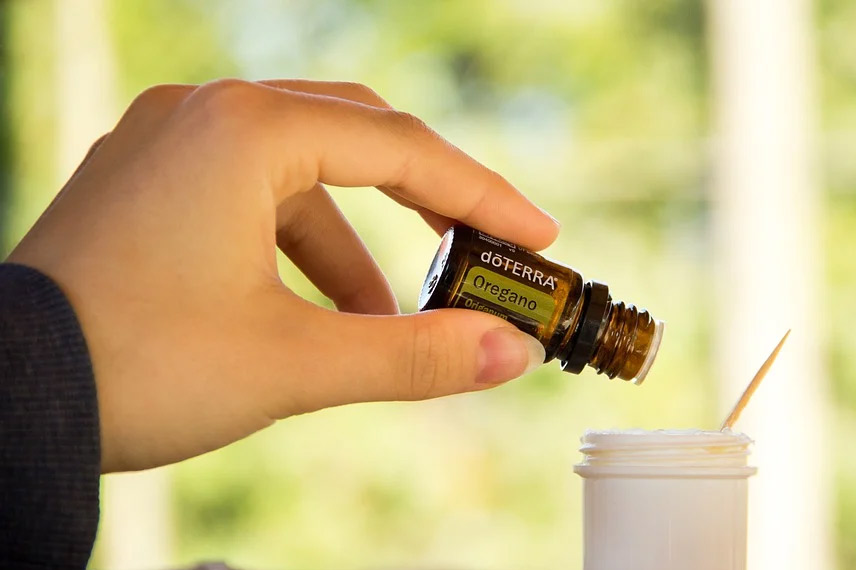
Oregano essential oil is used in homeopathy to treat spasmodic pain, stress, anxiety, and fatigue.
Diseases and potential pests
Wild marjoram is a plant that is not very susceptible to diseases and pests. However, it can be subject to attacks from red spider mites and suffer from black spot disease of oregano. This disease manifests as black spots of varying sizes that appear on the leaves and stems, causing the premature and rapid death of the plant.
Multiplication of oregano
Wild marjoram can be propagated by sowing, division of clumps, and propagation by cuttings.
How to sow oregano?
Sowing of oregano takes place between the months of March and May, at a temperature ranging from 13 to 16°C.
- Prepare trays filled with a good seed compost.
- Space the sowings about 30 cm apart to allow each plant to develop well.
- Lightly bury the seeds by covering them with just a pinch of compost or vermiculite.
- Place the oregano sowings in full light.
- Keep the substrate moist, without waterlogging it.
- Germination usually occurs within 10 to 24 days.
Transplanting wild marjoram seedlings
Transplanting into pots of the plants obtained by sowing occurs when the seedlings are strong enough to be handled.
- Transplant when the plants have between 4 and 5 leaves.
- Space them 30 cm apart.
- Gradually acclimatise the young plants to cooler conditions.
- Water regularly without waterlogging the substrate.
- Transplanting into pots or into the ground takes place when the plants are well developed.
How to divide wild marjoram?
In addition to sowing, it is also possible to multiply oregano plants by division. This is, in fact, the fastest and most reliable method of propagation here.
- Choose an oregano plant that is at least one year old.
- Cut the root ball in half using a spade.
- Transplant the oregano divisions into a hole three times the volume of the root ball.
- Cover with fine soil.
- Firm down and water without waterlogging.
How to propagate oregano by cuttings?
Oregano is also easy to propagate by cuttings.
- Take a stem about 10 cm long.
- Place it in a glass filled with water.
- Wait for new roots to appear before transplanting it into a pot.
- Then use a pot filled with soil resting on a layer of clay pebbles.
Useful resources
- Find all the varieties of oregano available in the Promesse de fleurs online shop.
- Discover our tips for growing oregano in pots.
- For further reading, find out how to create a spiralled herb garden.
- The sowing of aromatic plants will hold no secrets for you after reading our advice.
- If your vegetable garden is shaded, consider one of the 7 aromatic plants for shade that we invite you to discover.
- Subscribe!
- Contents






























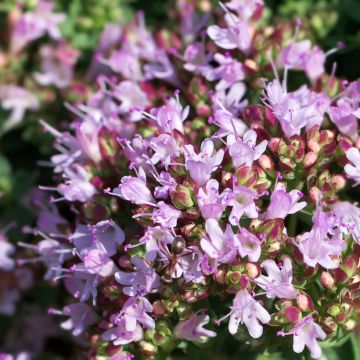

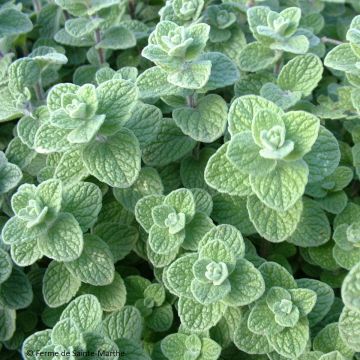
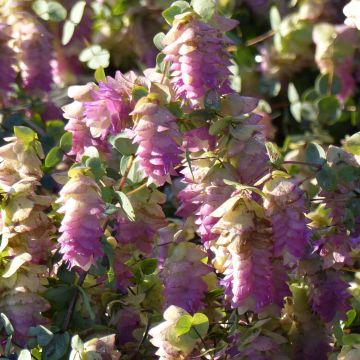

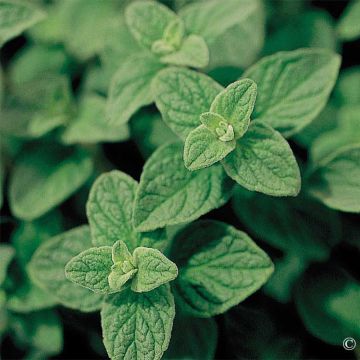

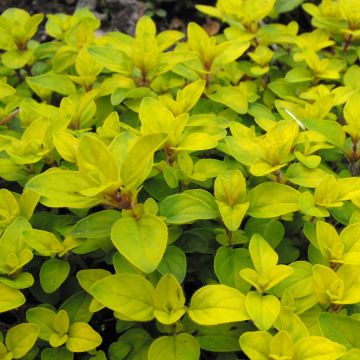

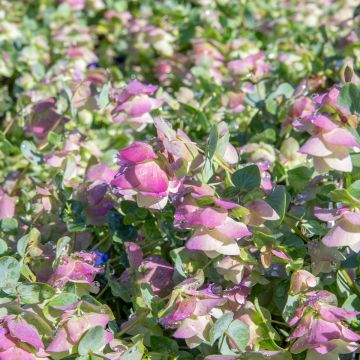
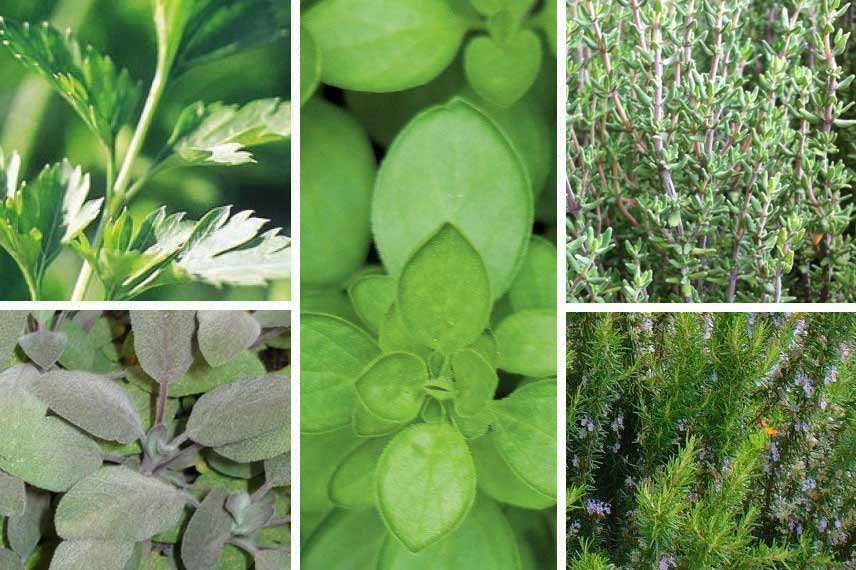
Comments